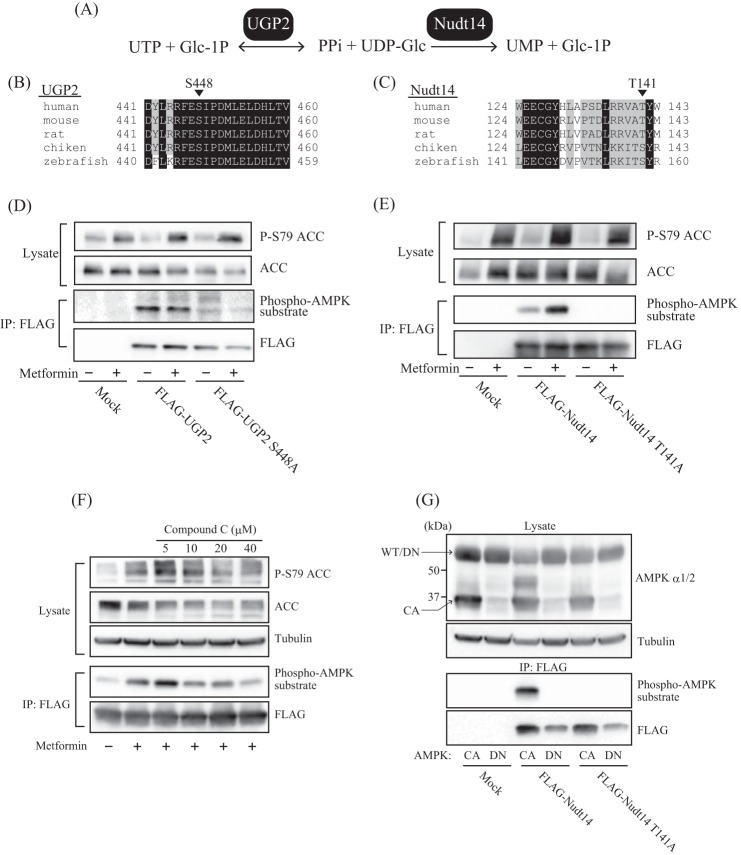FIGURE 6.
Phosphorylation of UDP-Glc pyrophosphatase Nudt14 by AMPK. A, enzymes involved in the synthesis and degradation of UDP-Glc. UDP-Glc was synthesized by UGP2 from UTP and glucose 1-phosphate (Glc-1P) and degraded by Nudt14 to generate UMP and glucose 1-phosphate. B, alignment of UGP2 amino acid sequences from various animals. Ser-448 (S448) was predicted as a potential phosphorylation site for AMPK. C, alignment of amino acid sequences of Nudt14 from various animals. Thr-141 (T141) was predicted as a potential phosphorylation site for AMPK of human or rodent Nudt14. D and E, immunoblot analysis showing the phosphorylation of UGP2 and Nudt14. HEK293 cells transfected with mock-, FLAG-UGP2-, FLAG-UGP2 S448A-, FLAG-Nudt14-, or FLAG-Nudt14 T141A-expressing vectors were incubated with (+) or without (−) metformin. Cell lysates and immunoprecipitates resulting from incubation with anti-FLAG antibody were subjected to immunoblotting with the indicated antibodies. Anti-phospho-AMPK substrate antibody recognizes proteins bearing the LXRXX(pS/pT) motif. F, effect of CC on phosphorylation of Nudt14 in metformin-treated HEK293 cells expressing FLAG-Nudt14. Cells were treated with 10 mm metformin and several different concentrations of CC. G, effect of co-expression with CA or DN forms of AMPK on phosphorylation of Nudt14. The smaller ∼37 kDa band on the immunoblot probed with AMPK α1/2 antibody represents AMPK CA expression. AMPK DN has a molecular mass similar to that of the WT, ∼65 kDa.

